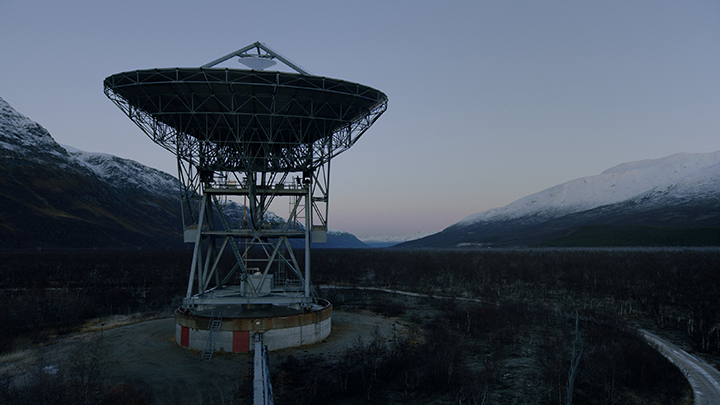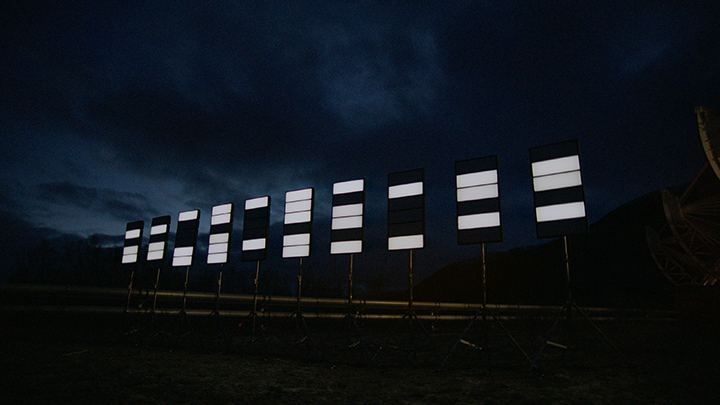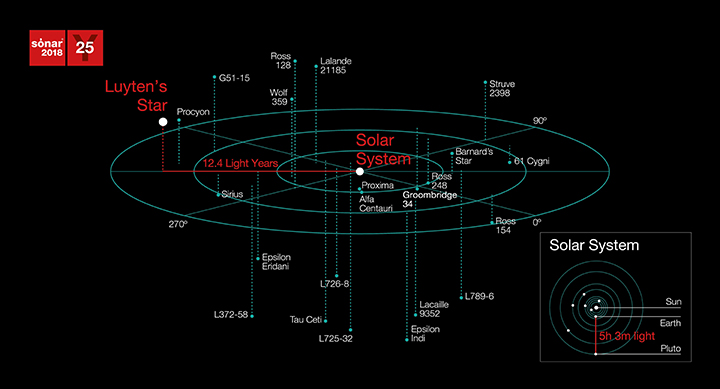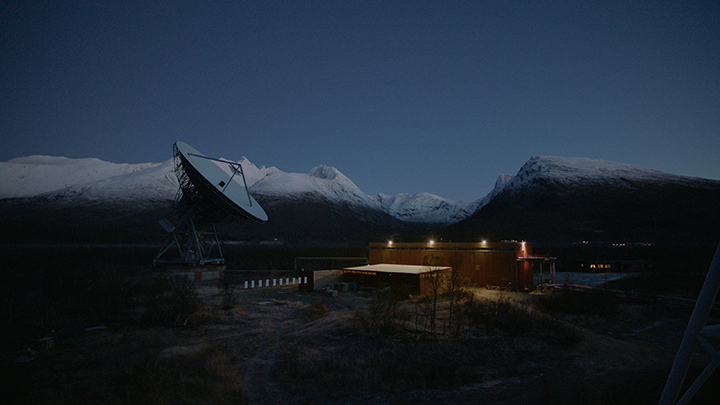After 25 years scanning the planet for the most advanced sounds and ideas on earth, Sónar festival has now turned its antennas towards space, by sending music beyond the limits of our solar system in an attempt to communicate with extraterrestrial intelligence.
THE MESSAGE
“Sónar Calling GJ273b” is the first radio message ever to be sent to a nearby potentially habitable exoplanet. The message includes 33 music pieces of 10 seconds each, commissioned exclusively for Sónar from artists who encapsulate Sónar’s exploratory approach to music over its quarter-century of existence. Any possible response could arrive in 25 years’ time, coinciding with Sónar’s 50th anniversary.
The “Sónar Calling” message includes 33 music pieces of 10 seconds each, commissioned exclusively from artists from diverse backgrounds and origins who encapsulate Sónar’s exploratory approach to music over its quarter-century of existence.
The first batch of transmissions sent on 16.17.18 October of the current year have included music from Autechre, Modeselektor, Laurent Garnier, Holly Herndon, Matmos, Jean-Michel Jarre, Nina Kraviz, Francisco López, The Black Madonna, Kerri Chandler, Ólafur Arnalds, Kode 9, Laurel Halo, Soichi Terada, Fatima Al Qadiri, Cabo San Roque, BFlecha and Nisennenmondai.
The second batch of transmissions is planned for April 2018 when music from Richie Hawtin, Carsten Nicolai, Squarepusher, Kate Tempest, Daito Manabe, Juana Molina, Niño de Elche, Cora Novoa, Lorenzo Senni, Zora Jones, Desert, LCC, Yuzo Koshiro and more will be sent.
All of them have performed at Sónar on one or more occasions and some of them will also be included in the line-up for Sónar 2018.
“Sónar Calling GJ273b” is also a collective celebration in which the Sónar audience can take part, participating in the open call which kicks off today. The public is invited to send an original composition, in any genre or musical style, and conceived with an unknown, extraterrestrial audience in mind.
THE DESTINATION
Luyten’s Star was chosen as the target because it is the closest star with a known potentially habitable exoplanet that is visible from the Northern Emisphere. The first transmissions were sent on October 16th, 17th and 18th from the EISCAT (European Incoherent SCATter Scientific Association) antenna located in Tromsø (Norway). A second batch of transmissions is scheduled for April 2018.
Luyten’s Star is in the constellation Canis Minoris, at a distance of 12.4 light years from us. It is a cool red dwarf star, with a temperature of about 3000ºC (compared to 5500ºC of the Sun) and a mass one third that of the Sun. The star, which cannot be seen without a telescope, was named after a Dutch-American astronomer, Willem Jacob Luyten, who measured its motion across the sky.
The discovery of two exoplanets around this star was announced in early 2017. One of them, named Luyten’s Star b or GJ273b, has a mass about three times larger than Earth and is located in the habitable zone of the star, although it is probably somewhat warmer than our planet. Its year lasts about 19 of our days.
Faced with the unique challenge of communicating with a possible alien intelligence, the participating artists have come up with very distinct and imaginative responses. These range from the poetic to the mathematical – music composed according to mathematical tenets devised to be easily decoded – to the political; both in terms of presenting how humans are as a species and in providing a critique on how we are destroying the planet. Some examples: Carsten Nicolai has sent a recording of his unborn daughter’s heartbeat; a composition by Autechre created from the first 449 prime numbers; BFlecha takes inspiration from the cycles of the earths’ distinct ecosystems and the elements of life on earth; Jean-Michel Jarre contributes one of his best known works in a nod to “Close Encounters of the Third Kind”; The Black Madonna references the modern music industry with an ironic take on how to make a hit record; Nina Kraviz aims for peace with a rumination on the dual meanings of the Russian word ‘Mir’ (Peace, and World) while Laurel Halo presents a poetic lament that doubles as a cry for help – Please Save Us!
Sónar has launched the “Sónar Calling GJ273b” initiative in collaboration with the Institute of Space Studies of Catalonia (IEEC), a research institute that studies all aspects related to space and space sciences and METI International, a research organization dedicated to Messaging Extraterrestrial Intelligence. Together we have sent for the first time powerful, intentional signals to a nearby target with the potential to harbor life, Luyten’s Star b, an exoplanet also known as GJ273b located 12.4 light-years from Earth (over 70 trillion miles).
“Sonar Calling GJ273b arises from the innate human Need to communicate and connect. It also attempts to find an answer to a question asked by civilizations throughout history – Are we alone in the universe? At Sónar, we hope we aren’t. Furthermore, given the largely negative impact of humanity on our planet, perhaps this is the best time to reach out to – hopefully superior – extraterrestrial intelligence to solicit help and advice on what we can do to change things. At a time of global conflict and seemingly insurmountable challenges, Sónar Calling is an attempt to rekindle a sense of global consciousness and a shared reflection on our collective present, that we hope will lead to new ideas and new partners. Yes, even alien ones,” – stated Sónar directors Enric Palau, Sergio Caballero and Ricard Robles.
“We are witnessing an exponential increase in our knowledge of planetary systems in the universe and we now know some 10 exoplanets that could be suitable to host life. Of course, we have no clue whether life has thrived on the surface of those planets and if such lifeforms have developed intelligence. But we at IEEC are excited to participate in the experiment of sending an intentional message to the nearby habitable planet GJ273b and wait for a response. If that happened in 25 year’s time, it would certainly be mind-boggling,” – commented Ignasi Ribas, director of the Institute of Space Studies of Catalonia (IEEC).
“METI is delighted to partner with Sónar for our first transmissions. Sónar is a world leader in exploring the interface of creativity and technology, complementing METI’s emphasis on the science of interstellar communication,” said Douglas Vakoch, president of the Messaging to ExtraTerrestrial Intelligence organization (METI).











